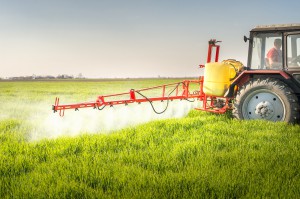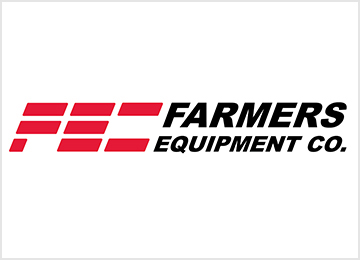Insurance Claims & Litigation in Agriculture
Tom Baumann, Expert Agriculture Team Ltd.
Ian MacKinnon, RDM Lawyers LLP
Modern agriculture sometimes has its drawbacks. We don’t settle scores over a beer and a handshake anymore; small, medium and large operations sometimes make claims against each other and once in a while it really comes to blows and someone sues someone else.

Let’s take the frequent example where an overspray on a field causes severe damage and even plant death in a neighbour’s field. The timing is usually known to the date and hour. However, outside of the obvious damage nothing else was known to the grower whose fields were thus compromised. A discussion with the neighbour usually results in increased aggravation and finger pointing. So the grower with the damaged crop calls legal counsel such as RDM Lawyers, who in turn calls a consulting business like Expert Agriculture Ltd., to figure out exactly what went on.
An initial meeting is set up and the damage is reviewed by the consulting expert to see how they might help or whether someone else needs to be involved. A lot of pictures are taken, the damaged area delineated, and samples gathered to take to a lab to analyse which chemical may have done the damage. Then comes the hard work. A meeting with the grower and legal counsel establishes which way they should proceed—and there are many ways. Usually there is a discussion as to how much all of this will cost and how much a claim has to be worth in order for this to make sense moving forward. At this meeting the expert is instructed on what to do and asked to write an independent report assessing the damage, the cost to the grower and expected costs in the future. How can the grower mitigate his/her losses? How many years of production might be affected and what is the loss of yield and value in lost plants? This is called establishing the “proximate cause” (that which caused the damage in the first place) as well as the “quantum of the damage” (how much damage).
All parties must understand that there are two hurdles to any successful claim. Most importantly, (and one cannot emphasize enough) is the issue of “causation”. Experts must be able to prove to a court of law that the defendant has caused the loss. In many cases, this is difficult because there can be multiple causes for any potential problems to various plants. However, causation is the important issue in any such claim. The second issue is simply the question of damages. What problems or losses flow from the defendant’s conduct? In essence, the question is what damages have been caused by the problem.
So samples get analysed, and the action may be re-enacted in a controlled setting on a few plants to see if the same damage can be repeated to settle any notion of the damage having been caused by other sources. Once the samples are back, these will be incorporated with all sorts of other data that was collected at the first field visit or any subsequent visits. Sometimes it takes a year of observation or more to see just how much damage was done to perennial plants such as blueberries.
Maps get refined via Google Maps and all the information processed into a Word document—an expert report. The document details the expertise of the writer, the case at hand, and follows the instructions given by legal counsel. Usually an explanation of special technical terms is added in the form of a glossary. The main section provides some background information and describes all the damage summarized with the opinion of the expert in concise language. A few disclaimers are added, as well as a statement that declares the expert has provided an unbiased account and based the findings on facts, and a long list of appendices that describe best farm practices (such as described in the production guide or mode of the chemical ), and the report is finalized.
That report goes to legal counsel to make sure everything that was asked for is covered. Counsel would not ask the expert consultant to change their opinion, but might just point out errors like the misspelling of a company name. From there it is pretty straight forward. The other party, or their representatives (e.g. legal counsel or insurance), are contacted and an effort is made to seek a settlement out of court through mediation or arbitration. If this should fail, a claim is presented to the court system within two years of the initial damage having become known. Nearly always the case is settled prior to going to court; however, in some instances it does go all the way to court and that’s where it gets costly and drawn out. One can rest assured that in almost all cases—once an expert is contacted, and counsel is engaged—a settlement can be obtained within a few months, or longer in more complicated cases. It is incredibly rare for any claim to actually have to go to court.
If you are having problems at your farm, and you think a third party has caused those problems, contact a lawyer, your insurance agent or a consultant to discuss whether or not you have a claim for your losses.












